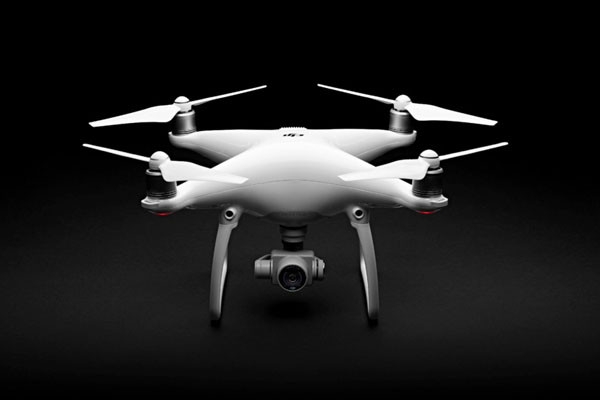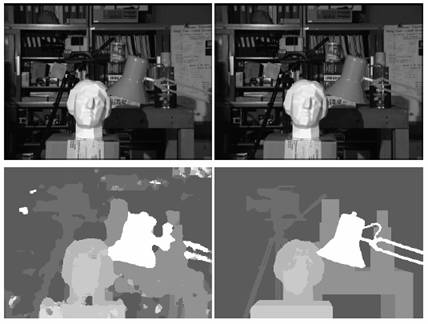After the CCF·GAIR global artificial intelligence and robotics summit on August 13, 2016, Wang Fan, vice president of DJI Innovations, accepted interviews with a number of media including Lei Fengwang (search for “Lei Feng Net†public number) .
"In the future, we need to do more elaborate and more precise. It is necessary to turn 99% into 99.9%. This is the spirit of artisans." - Wang Fan, Vice President of DJI Innovation
In the past two hours of formal interviews and informal interviews, this is a word most impressed by Wang Fan. DJI still retains its gene-focused gene, down-to-earth attitude and pursuit of ultimate faith.

Dajiang Wizard 4
How does the craftsmanship manifest in Dajiang’s products?
Wang Fan: “We are most proud of the precision hovering technology in indoor and outdoor complex conditions.â€
“Hover†is the most basic capability of a multi-rotor UAV. Three-dimensional position, three-dimensional angle, three-dimensional velocity, three-dimensional acceleration, and three-dimensional angular velocity. These fifteen states that need to be measured are all stable for multi-rotor UAVs. Important role.
The controller adjusts the flight attitude through a series of “cascade controlsâ€: the known three-dimensional position is always locked in the hovering position, where the control amount is the hovering speed of one target, and the target is hovered when the aircraft is in the hovering position. The speed is 0; when the aircraft deviates from the hovering position, the target hovering speed is not 0, and the direction tends to the hovering position.
DJI's integrated navigation technology combines the advantages and disadvantages of GPS, inertial measurement components, geomagnetic compasses, and barometers. By processing electronic signals and merging the measured values ​​of various sensors, more accurate measurements of fifteen state quantities of aircraft are obtained.
Wang Fan: “The Active Track function of Dajiang Wizard 4 is also called intelligent follow-up. Through image recognition and machine learning, we have truly realized visual tracking.â€
Dajiang implemented a visual odometer consisting of a binocular stereo vision system plus an inertial measurement element on the Elves4. This is a very complicated visual perception system for the algorithm. It not only uses the image to inversely launch the plane motion of objects in the field of vision, but also The three-dimensional positions of these objects are reversed and multiple optimization calculations are performed based on the three-dimensional positions of these objects.
However, using a binocular stereo vision system similar to the human eye structure, this is easier to achieve. Because an object appears in the field of view of the left and right cameras at the same time, the left and right fields of view have parallax. Parallax can help solve the position of the object and can be solved only by a simple geometric relationship. This kind of technology is very mature.

Bottom binocular stereo vision system
The function similar to the visual tracking is actually available in the products before Dajiang, but at that time, only the GPS point was set and the flight was performed around the point. Dajiang truly implemented tracking based on screen recognition technology on Elvish 4 and had automatic obstacle avoidance throughout the entire process.
Wang Fan: “From indoor to outdoor, seamlessly connecting, our products will not produce any offset. This is the basic, key, core, and not other fancy features.â€
Elf 4 has two sets of binocular stereo vision systems, one set to look forward and one set to look down. This design has two advantages: 1. A set of binocular stereo vision systems that look down can detect the three-dimensional position of the objects on the ground below, thus knowing the distance of the ground; 2. A set of binocular stereo vision systems looking forward It can be used to detect the depth of the object in the front scene and generate a depth map for obstacle perception.

Depth map
Elf 4 has a total of six sensors: GPS, inertial measurement element, barometer, geomagnetic compass, ultrasonic module, and binocular vision system. There are two sets of binocular vision systems, a total of four cameras; two inertial measurement elements to achieve dual redundant backup; geomagnetic compass also has two, the same dual redundancy. When the inertial measurement element or the geomagnetic compass at work is seriously disturbed, the system will automatically perform backup switching and switch to another sensor.
With these sensors, the integrated navigation system was upgraded to become a smart navigation system. The intelligent navigation technology greatly expands the space where the aircraft can move. When there is GPS, the system can measure fifteen state quantities through GPS. The visual odometer can still continue to operate, providing additional speed and position measurement. The value further improves the accuracy; when the GPS signal is not good, the visual odometer can take over the GPS to provide stable observations for the entire system.
Wang Fan: "Our image data transmission technology helps vast amateurs to realize their ideas and ideas."
Lightbridge's high-definition long-distance digital image transmission technology has allowed Dajiang to distinguish itself from other drone manufacturers and has opened up the gap. Lightbridge is a dedicated communications link technology developed by DJI. It can realize almost “zero latency†720p HD transmission and display. The distance can usually reach more than 2km. It can even reach 5km or more in the open without interference.
Lightbridge technology uses unidirectional image data transmission, similar to the data transmission form of a television broadcasting tower located at a height. This technology is undoubtedly the most advanced in the current drone image transmission. It can not only minimize the time delay of image transmission, but also maximize the transmission distance. In terms of technology implementation, it is precisely because Lightbridge uses one-way broadcast data. Even if it flies far, the time-to-picture delay can remain stable at around 100-200 milliseconds.
A new generation of Genie 4 aerial drones. Its equipped camera can shoot 4K/30fps and 1080p/120fps video and achieve slow motion shooting. Lens 8-lens design, 94° viewing angle, f/2.8 aperture, and the closest focusing distance reduced to 1m. Compared with the Phantom 3 camera lens, the distortion is reduced by 36% and the color difference is reduced by 56%.
In terms of photo quality, the Phantom Genie 4 camera can also capture 12 million pixel photos in Adobe DNG RAW format, video and photos are correct. The main criterion defining the professional- and consumer-grade aerial drones before, namely the imaging quality, has now straddled Dajiang. As stated in the official video, Dajiang provided a complete set of aerial solutions
Finally, it is appropriate to end with another sentence that I heard in the interview.
Wang Fan: "We are not a PPT company. We will not go anywhere before we realize it."